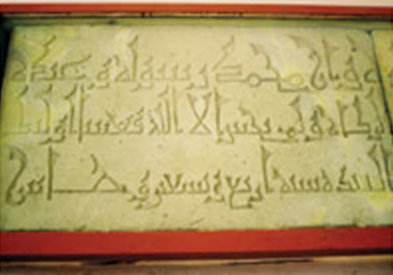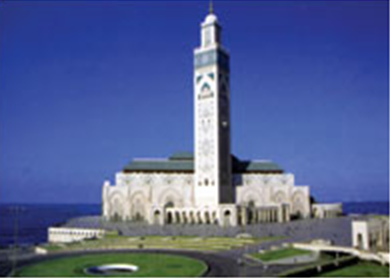Banbhore, Sindh
This is a collection of articles archived for the excellence of their content. Readers will be able to edit existing articles and post new articles directly |
Contents |
Banbhore, Sindh
The ancient city of Banbhore
By Areeba Fuad Siddiqui
Ancient cities are of major importance for everyone. They describe old civilisations, traditions and cultures. Centuries ago, these cities too had a civilisation and culture of their own, yet now they are mere excavation sites. However, even then a lot can be learned from these places.
There are many ancient and historical places in Pakistan. Each one is of great importance, but today we will talk about a city “Banbhore” situated in Sindh.
Banbhore is more than 2,100 years old. Around the 10th century Banbhore was the capital of a chief Bamboo Raja and was named Bhambor after him. The city was later destroyed in 1250AD. It is an ancient city through which Islam entered the sub-continent when Mohammad Bin Qasim invaded it. The first mosque of South East Asia was also built during this period. After the young general conquered the city, Muslims built more mosques, other residential buildings and fifteen walls around the town.
Banbhore is situated at a distance of about 64 km east of Karachi. It’s an archaeological site and reveals that it was once a well-planned city.
Some scholars identify Banbhore with Debal, the port city where the 17-year-old Arab Conqueror Mohammad Bin Qasim landed in 712 AD. He was a general in the army of Hajjaj Bin Yousuf. Hajjaj Bin Yousuf was the governor of Iraq and was known for his strict administrative qualities. At that time Sindh was ruled by Raja Dahir, a Hindu Raja who was notorious for his cruelty and oppressive rule. Muslims were the most oppressed class in Dahir’s domain and were treated in a cruel and barbaric manner.
However, Hajjaj sent two expeditions under Ubaidullah Nibhal and Budial Bin Tahfa, which ailed when their commanders died in battle against Hindus.
Hajjaj then decided to send another army under the leadership of Mohammad Bin Qasim who was only 17 at that time. He attacked India on 10 Ramazanul Mubarak, 92 Hijri, October 28, 711 AD, and laid a strong siege around Debal, which was the strong fortification of Hindu armies. A catapult (manjaniq) known as Al Aroos was used to dislodge the Hindu armies. Eventually Debal was conquered and Dahir was killed. Mohammed Bin Qasim then occupied the delta towns, marched north up the Indus and within a few weeks reached Multan.
Banbhore was first inhabited by central Asian Sythians and Parthyans; later this site became the last conquest of Alexander the great from where he went back westwards and died on his way to Iran.
Banbhore is also associated with the famous romance of Sassi and Punnu. Sassi belonged to Banbhore, but their graves are in “Othal” in Balochistan.
Museum
Just after entering the museum you can find a model map of Banbhore enclosed in a glass case. There are many guides appointed by the Pakistan government who provide loads of information to the tourists on the age-old civilisation.
The museum at the site also displays pottery, china ware, beads, coins and many other articles used by the people of this ancient land. When we walk around the museum we learn that Banbhore was a well-planned and advanced city. The people had nice tools and equipments to cope up with the daily challenges. For cooling the water, they had a mud-clay-cooler with a long stem at the bottom of the same material. The stem was used to fix in the sand, which kept the water cold. You can also find toys, needles, buttons, etc. These objects take you back in time and one even forgets to bat an eye while observing.
Mosque
Now, after getting information from the museum, one moves towards the archaeological site. You can hire a guide here too; he will lead you to the site and tell you about different discoveries. You can find the excavations of the first mosque of South East Asia, the bricks which have been used are very modern and remain cool in summer and become hot in winter.
Temple ornaments
Other than the mosques there were other places of worships such as temples too. During excavations certain objects and statues were found that hailed the presence of temples in this age-old civilisation.
Markets
Market places in this area consisted of huge areas of land. Road networking and the drainage system are other aspects of the city that signify the high level of intelligence that the people of the area possessed.
These discoveries shed light not only on the Muslim era but also on pre-Muslim times. These tell the tale about the civilisations of early centuries of the Christian era. Some human skeletons have also been found in streets and houses. The Hindu temple of the pre-Muslim era has also been unearthed along with coins belonging to the Khilafat period. Other stone, glass and ivory objects, pottery, jewellery, arms and certain human skeletons with arrows in their heads show that this town came to a violent end.
Banbhore has given our museums a strong archaeological heritage, one that attracts tourists from all corners and all continents of the world.
See also
Banbhore, Sindh Bhambhore







